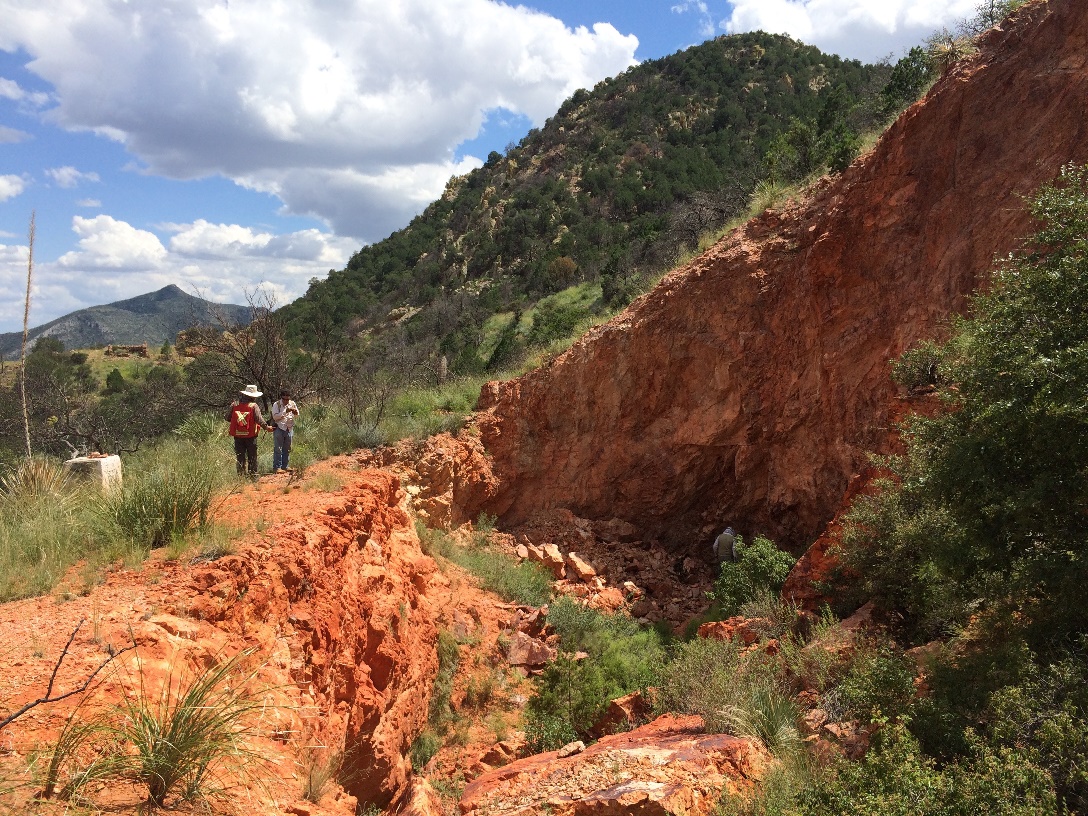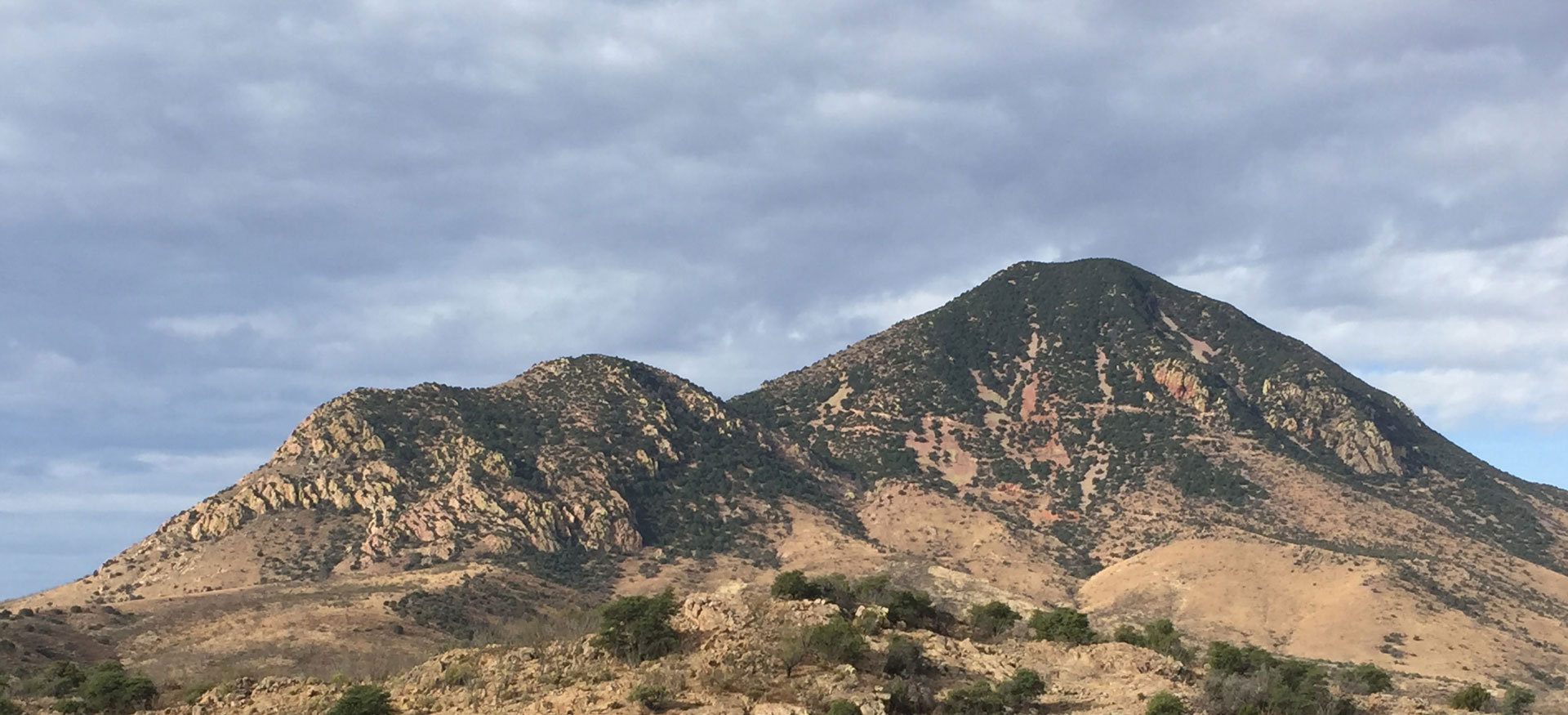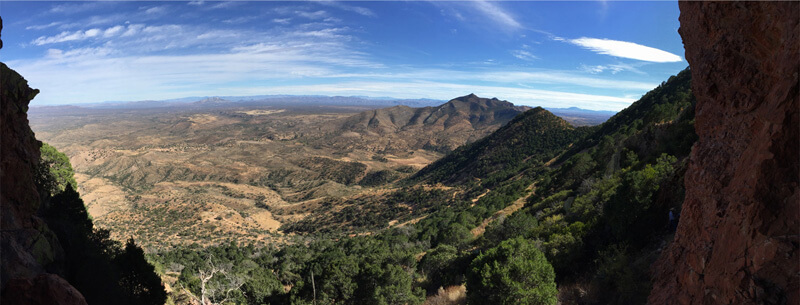Cerro Magallanes Targets:
Cerro Magallanes Dome encompasses four sub-targets: San Jose, North Breccia, Central Target and East Target (Figure 4). Riverside’s extensive work program since 2017 have shown a vertical variation with significant concentration of Ag at the base of the dome along the eastern slope to gold-only enriched at the top of Cerro Magallanes. Three specific elevation: 1,700 m, 1,900 m and 2,100 m comprise most of the high-grade, which suggest multiple mineralizing events within specific structural settings, along dome margin and stratigraphy. This style of mineralization is very similar to the Pitarilla mine in Durango, where large volumes of mineralized rock can be found in addition to high-grade structural bounding margins. This hypothetic target at Cerro Magallanes would be at 300 to 500 meters depth from the top of the dome, evident by the presence the Cabullona sediments outcropping at 1,650 m elevation on the eastern slope.
 Figure 4: Geological map of Cerro Magallanes with historical and Riverside’s rock sampling
Figure 4: Geological map of Cerro Magallanes with historical and Riverside’s rock sampling
- The San Jose target is located at the top of the dome along the primary structural zone bisecting the peak of Cerro Magallanes. There are over half a dozen of old workings here, some of them accessing multiple parallel fault zones carrying gold mineralization of 47 m @ 1.12 g/t Au, 8 m @ 0.91 g/t Au (Cambior, 1995). At surface, Riverside’s assays returned 3.0 and 7.9 g/t Au for a 1.5 m long channel and up to 9 g/t Au rock chip sample. These veins show classic epithermal multigenerational opening and filling textures typical of feeder zones like those at the San Julian Mine in Chihuahua also of the same mid-Tertiary age.
- North Breccia target has an outline of 250 m by 100 m and is marked by multiple zones of hydrothermal brecciation in porphyritic, flow banded and flow breccia rhyolitic rocks with strong hematite-stained silica alteration. Locally, crystallization of quartz and fluorite in open-space as well as veinlets is visible, however the area shows primarily extensive fractures along NW-SE trend with strong hematite and clay-rich gouge material. Since 2017, Riverside Resources collected over 75 rock-chip samples in this area. Twenty-six of these samples returned gold assays ranging from 0.41 to 7.46 g/t Au. CRM and Cambior both drill-tested this area and intersected a 30 m interval of 1.41 g/t starting 4.0 meters downhole (138-95-08). The same portion of mineralization was intersected in hole 139-95-19 and produced an 8-m-long interval that averaged 0.65 g/t Au.
- Central target is located along the same northwestern trend as the North Breccia and returned one sample of 133 g/t Au and 335 g/t Ag in mine dump. There are numerous small underground workings reportedly dating back to the 1940s that extend as a linear feature from the peak of Cerro Magallanes down the slope (Figure 5). Riverside Resources collected 30 samples across the target, which returned between 0.5 and 133.7 g/t Au with values worth noting such as 58 g/t Au and 19 g/t Au with reported respective silver values of 288 g/t Ag and 335 g/t Ag.1 The Central target was tested by 5 drill holes in 1995. Hole 139-95-17 intersected 42.0 m averaging 0.49 g/t Au with a maximum assay of 3.26 g/t Au. Hole 138-95-9 & -10 intersected 36 m at 0.2 g/t Au and 60 m at 0.2 g/t gold.
1 See press release dated June 6, 2017
 Figure 5: Collapsed underground workings of Obra 14 at Central target. View to E-SE.
Figure 5: Collapsed underground workings of Obra 14 at Central target. View to E-SE.



